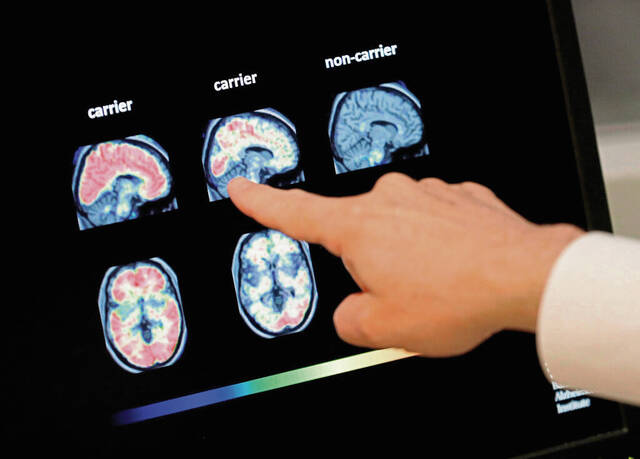Government has a lot on its plate these days. The coronavirus pandemic dominates, but it is fighting for time with weather emergencies such as hurricanes that sweep from New Orleans to New York and the need to improve infrastructure. In Pennsylvania, local and state leaders juggle education, health care, transportation, unemployment, worker shortages and countless other catastrophes big and small every day.
But in the teeth of the urgent, it is important to highlight matters that seem like they can wait — because they can be pushed off until they become too big to handle.
One of those is dementia care.
Pennsylvania has a steadily graying population. Of 12.8 million residents, more than 2.2 million are 65 or older and the proportion is getting larger. That makes more and more people subject to diseases that affect seniors, including Alzheimer’s disease, Lewy body dementia, Parkinson’s disease and other conditions that affect memory, problem solving, language expression, regression and other hallmarks of dementia.
More than 380,000 older Pennsylvanians deal with some form of those diseases. That is more than 17% of the senior population.
But while the number of people dealing with dementia — either as patients themselves or as family members or caregivers — is growing, the amount of help in the form of dedicated dementia care and skilled medical personnel in those areas is not keeping pace.
A Spotlight PA and PublicSource article explored the looming problem. Jen Ebersole, director of state government affairs for the Alzheimer’s Association of Greater Pennsylvania, called it a public health crisis and said the state is not treating it that way.
It might be because dementia care sits at the intersection of other problems. Alzheimer’s and other similar conditions are the center of a kind of real-world Venn diagram where issues such as nursing home oversight, nursing employment shortages and health care costs collide.
That can lead to other issues. Between personal care homes and nursing homes, there are fewer than 18,000 dementia unit beds in the state — enough for less than 5% of Pennsylvanians with a dementia diagnosis. If there is no bed available, what happens to that person? Are they placed in a facility that doesn’t have adequate care or do they stay at home with family or caregivers trying to provide round-the-clock care in a less than ideal setting?
It’s a problem that probably doesn’t seem like much of an emergency if you aren’t one of those families, and yes, there are enough other problems to keep everyone busy.
But prioritizing dementia care isn’t something Pennsylvania’s leaders can afford to delay. In fact, keeping it firmly in mind might help make decisions about important areas of education, economic development, insurance, medicine and more.








